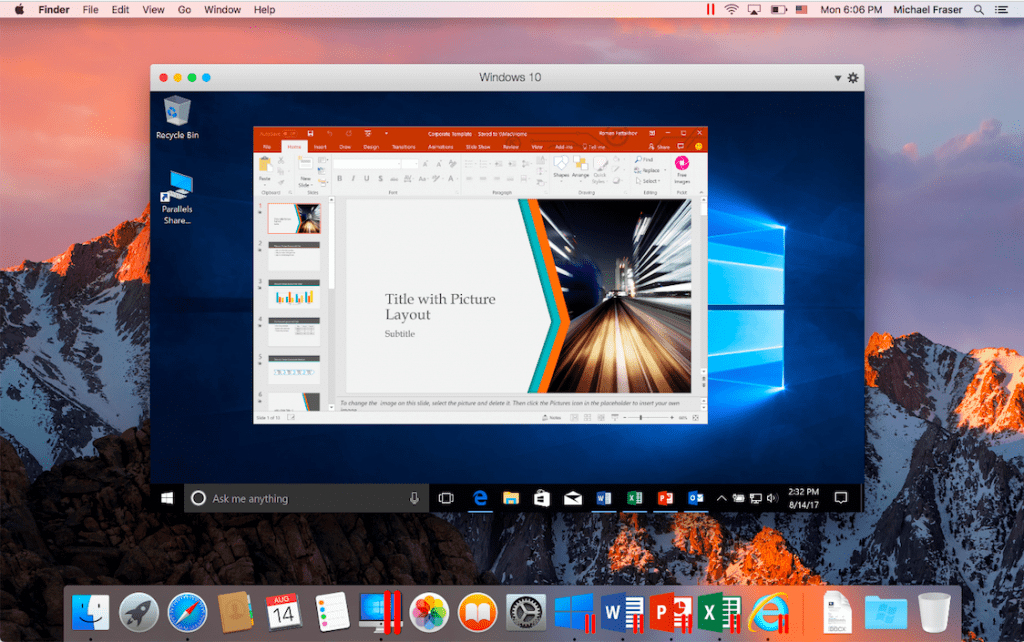
- PARALLELS ACCESS MAC LOCALHOST UPDATE
- PARALLELS ACCESS MAC LOCALHOST WINDOWS 8.1
- PARALLELS ACCESS MAC LOCALHOST MAC
- PARALLELS ACCESS MAC LOCALHOST WINDOWS
In other words, find out what your computer is called on the network. Use this name, followed by ":3000", to access your local Rails server." " followed by a name ending with ".local". You will see a message saying, "Other computers on your local subnet can access your computer at.
PARALLELS ACCESS MAC LOCALHOST MAC
"Go to System Preferences on your Mac and click the Sharing icon, then switch to the Services tab. I wanted IE within Parralels to also interpret these, but it does not recoginize localhost, or 127.0.0.1 the same.īut thanks to a few suggestions here, I figured it out.

I have a hosts file configured to interpret lots of different domains locally, e.g., I develop lots of websites on a virtual server on my Mac.

Optionally, you can even comment the lines that start the Parallels DHCP-NAT server in /Library -> StartupItems -> Parallels -> Parallels, as with this setup, you use neither DHCP nor Parallels' NAT (but OS X's own NAT is used). Now you can access your Macs's development server by entering yourcomputer as the URL in IE, no matter what IP addresses are assigned to your mac.
PARALLELS ACCESS MAC LOCALHOST WINDOWS
Assign static IP addresses (from an unused network range) to the Parallels Host-Guest adapter and the network interface in Windows (I used 192.168.123.1 and 192.168.123.2 with network mask 255.255.255.0).3000-30xx for Rails development with locomotive) in the OS X firewall by adding a new rule. Open ports 80, 443, and any other ports you use for your development server (i.e.Set up OS X Internet Sharing (in the Sharing System Preferences panel) to share the connection with the Parallels Host-Guest adapter.Switch the Parallels virtual machine to host-only networking.As the IP address of the virtual network devices installed by Parallels are assigned by a dedicated DHCP server also installed by Parallels, and the IP address of my laptop changes as I change locations, I use the following setup to be able to access my laptops webserver by name from Windows. This can easily be done running the following command in the OSX Terminal:īy adding the Windows system name you can now use it to navigate to instead of having to point to an IP Address.I use Parallels Desktop mainly to make sure my websites work on IE. Open up the Windows Firewall to allow IIS Express and the desired ports to be accessed 'externally' (yes, your Mac = external, as far as Windows is concerned)Īs a final tip I'd like to suggest to also add your Windows' system name to the Mac host file.

PARALLELS ACCESS MAC LOCALHOST UPDATE
That's where the nfig is.Īfter that, I had to update my firewall to let IIS through ( something changed where the old permission no longer worked, not sure if it's a quirk on my machine or not). vs, and inside that, you need to navigate to the config folder. In the solution folder, there is a folder called.

The config files for the web application are now stored with the project/solution itself instead of old location in your documents folder. I have this working now with Visual Studio 2015. What do I need to do to access the windows server from the mac?įor those finding this page using Visual Studio 2015 and Windows 10, there appears to be a difference in how IIS Express works, and this solution no longer appears to solve the issue. I currently have the network to "Share with my Mac" on the virtual machine settings. However, the localhost is different on my Mac than it is on Windows, and thus I can't simply write localhost:XXXXX on the mac. On the windows vm, I can write localhost:XXXXX as my address and get the page. In windows, I am running a site using IIS Express on a specific port.
PARALLELS ACCESS MAC LOCALHOST WINDOWS 8.1
I have a Windows 8.1 virtual machine (VMWare Fusion 6) running on my Mac (OSX 10.9.4).


 0 kommentar(er)
0 kommentar(er)
